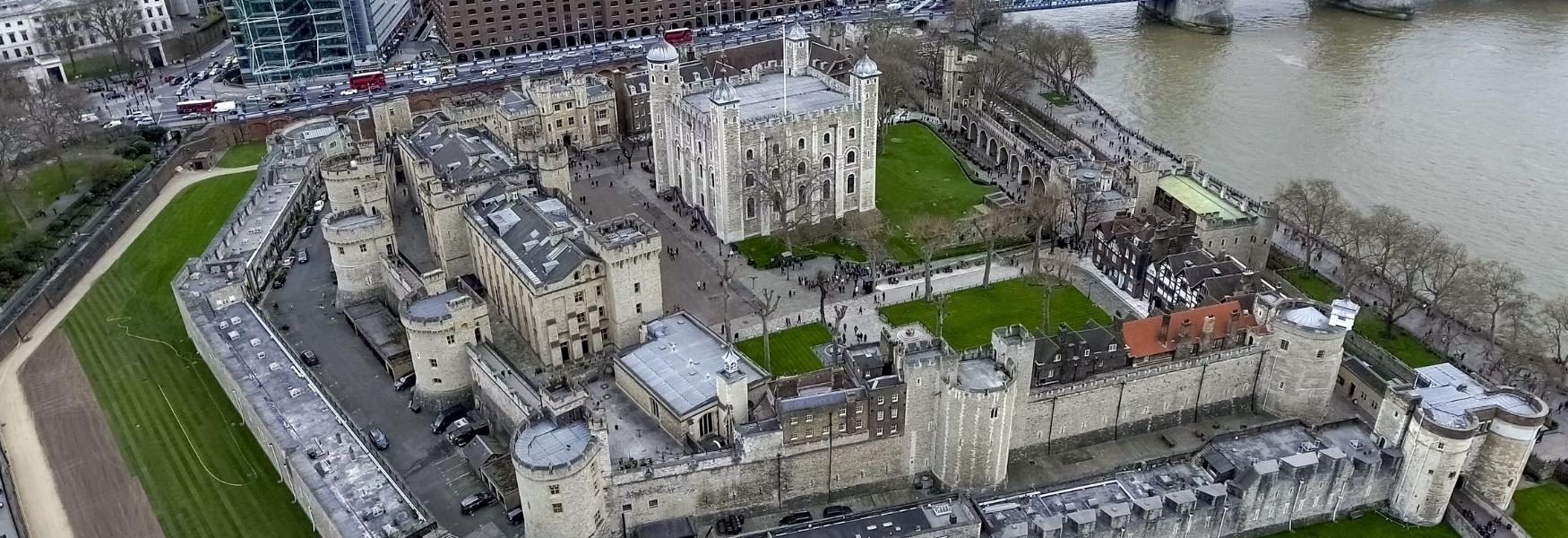To build your own Itinerary, click  to add an item to your Itinerary basket.
to add an item to your Itinerary basket.
Already saved an Itinerary?



You are here: UK History > Royal History > House of Tudor > Lady Jane Grey | the Nine Days Queen
Historians dispute whether Lady Jane Grey should feature in lists of English monarchs, after all, she was only queen for nine days and only because of a plot to keep Mary Tudor from the line of succession. Whatever your feelings, Lady Jane is a fascinating person and worthy of being England’s first queen by succession.
Born: 1536 or 1537, in Leicestershire
Died: 12th February 1554 (aged 16/17), Tower of London
Reign: 10th – 19th July 1553
Parents: Henry Grey 1st Duke of Suffolk and Lady Frances Brandon
Predecessor: Edward VI (cousin)
Successor: Mary I (cousin)
Spouse: Lord Guildford Dudley
Children: none
Royal House: Tudor (was the...Read More
Historians dispute whether Lady Jane Grey should feature in lists of English monarchs, after all, she was only queen for nine days and only because of a plot to keep Mary Tudor from the line of succession. Whatever your feelings, Lady Jane is a fascinating person and worthy of being England’s first queen by succession.
Born: 1536 or 1537, in Leicestershire
Died: 12th February 1554 (aged 16/17), Tower of London
Reign: 10th – 19th July 1553
Parents: Henry Grey 1st Duke of Suffolk and Lady Frances Brandon
Predecessor: Edward VI (cousin)
Successor: Mary I (cousin)
Spouse: Lord Guildford Dudley
Children: none
Royal House: Tudor (was the granddaughter of Mary Tudor, sister of Henry VIII).
If you do believe that Lady Jane should be in the list of English Monarchs, then she breaks records as having the shortest reign. Not only that but she was believed to be one of the most learned young women of her day and was one of the first monarchs to be accused of treason and executed.

Image: Lady Jane Grey
Lady Jane Grey was the eldest daughter of Henry Grey, the 1st Duke of Suffolk and Frances Brandon, the eldest daughter of Mary Tudor, the youngest sister of King Henry VIII.
She had an extensive, humanist education, something that was virtually unheard of at the time and was said to much prefer learning and reading to taking part in activities such as hunting or dancing. She was educated alongside her cousins, Edward VI and Elizabeth I and was thought to have been fluent in several languages including Latin, Greek, Hebrew and Italian.
In February 1547, Jane moved from her family home to Sudeley Castle, joining the household of Thomas Seymour, the maternal uncle of the King, and Catherine Parr, the king’s former step mother. Catherine Parr had assumed the role of guardian for Princess Elizabeth, the king’s half sister, who Jane lived alongside until Elizabeth was sent away after a scandal involving Seymour. Jane remained in the home until Parr died in childbirth the September of the following year and took the role of chief mourner at her funeral. Once the mourning period was over, she returned to Thomas Seymour’s household where she stayed until he was arrested. Following the downfall of both Thomas and his brother Edward Seymour, the role of Lord Protector looking after King Edward VI’s government went to John Dudley, the Duke of Northumberland. The Dudleys were close friends and allies of the Greys and when it was evident that the king was dying, they worked together to secure a succession they approved of.
At the age of sixteen, Jane was married to Lord Guildford Dudley, the younger son of John Dudley, who by that time was the Lord Protector of England and the most powerful man in the country. They were married in a joint ceremony with Jane’s sister, who was wed to the Earl of Pembroke.
By the time King Edward was certain of his death, he had reformed England completely from Catholicism, in order to strengthen these reforms, he needed a fellow Protestant to take over from him, however, his sister Mary, had refused to convert, remaining a devout Catholic.
The Third Succession Act brought in by Henry VIII did actually include Lady Jane and her sisters in the line of succession. The act stated that on his death, the line of succession would be, his son Edward, his oldest daughter Mary, his youngest daughter Elizabeth and then if none of them had children, it would pass to the heirs of his younger sister, which included the Greys. According to this act, when King Edward IV died, the crown should have passed to his sister Mary, however, by this time, Edward had continued the English Reformation started by his father and had moved England away from Catholicism. Mary was a devout Catholic and by naming her as queen, would undermine everything that the government had been doing over the last six years. Edward, alongside his legal advisors and under the supervision of John Dudley, made his own version of the line of succession, naming Jane, something historians say she accepted with reluctance.
On Edward’s death, Jane was proclaimed Queen of England, France and Ireland and was moved into the Tower of London waiting for her coronation. Though she was named Queen, she refused to give her husband the title of King, which upset the Dudleys immensely. Instead, she planned to make him Duke of Clarence after the coronation.
Jane being named queen didn’t stop Mary from asserting her claim, however. On hearing of her brother’s death, Mary immediately made her way to her estates in East Anglia to rally her tenants and supporters. John Dudley was determined that Mary wouldn’t interfere with his plans and planned to capture her to prevent her from gaining too much support. He sent an army to isolate her and prevent her from receiving support from the continent. However, the Privy Council, who had initially supported Edward’s change to the line of succession, pledged their allegiance to Mary instead. Several of them later claimed to have been threatened to support Jane as Edward’s heir and with much of England and Europe loudly calling for Mary to succeed, proclaimed her queen instead.
After Mary was declared queen, deposing Jane just nine days after she herself was given the title, Jane was moved from the royal apartments to the Tower of London’s Gentleman Gaoler’s apartments. Her husband was arrested and put in the Beauchamp Tower, they were both charged with high treason alongside two of his brothers and Thomas Cranmer, who had been Archbishop of Canterbury since Henry VIII’s marriage to Anne Boleyn. It was under Cranmer that many of the reforms to the church were made.
The defendants were tried on 13th November 1553 at Guildhall in London. They were all found guilty, with Jane given the sentence of either being burned to death on Tower Hill or beheaded at Mary’s discretion. Mary initially decided to spare Jane’s life, however when her father Henry Grey decided to take part in a rebellion against Mary’s marriage plans, she changed her mind and scheduled the executions of Jane and Guildford Dudley. Mary did offer Jane a chance to convert to Catholicism, but Jane refused and was put to death on 12th February. Jane might not have converted, but she did accept Mary’s gift of her personal chaplain, who she befriended and later accompanied her to the scaffold.
Guildford Dudley was publicly beheaded at Tower Hill, his body was then brought back to the Tower and driven past Jane on her way to her own execution. It is recorded that she screamed his name on seeing him, but didn’t falter on her way to Tower Green, which was inside the Tower walls. On arriving at the scaffold, she made a short speech to those present, admitting to the charge and blindfolded herself. Once blindfolded, she couldn’t find her way to the block and was assisted by the Deputy Lieutenant of the Tower.
Jane and Guildford are buried in the Chapel of St Peter ad Vincula in the North side of Tower Green. No memorial stone was erected for them.
Though Jane’s father was executed 11 days after her, that wasn’t the end of the Greys. Her mother remarried and was fully pardoned for her role in Dudley’s scheme. She and her remaining two daughters, Katherine and Mary were permitted to live at court and were members of both Mary I and Elizabeth I’s households. Both Lady Katherine and Lady Mary married against the wishes of Elizabeth I. As Elizabeth hadn’t married or had children of her own, Lady Katherine and her offspring became prospective heirs to the throne and there were plans to marry her to a Scottish lord in order to retain an alliance with the Scots. However, Lady Katherine secretly married Edward Seymour jnr, 1st Earl of Hertford, the son of the very same Edward Seymour who had been Edward VI’s Lord Protector, which incurred the wrath of Elizabeth I. Not only were the Seymours undesirable, but Katherine’s ability to have male heirs threatened Elizabeth’s hold on the crown.
Katherine gave birth to two sons and was imprisoned in the Tower of London under house arrest until her death.
Bradgate House, Leicestershire
Believed to be her birthplace
Sudeley Castle in Gloucestershire
Tower of London
Read Less
© Visit Heritage 2025. All Rights Reserved


We are now retrieving your search results. Please wait, this may take up to 30 seconds


![]()
Supporting the Destination
![]()
Quality Guarantee
We are now retrieving real time availability results. Please wait, this may take up to 30 seconds.

.png)


